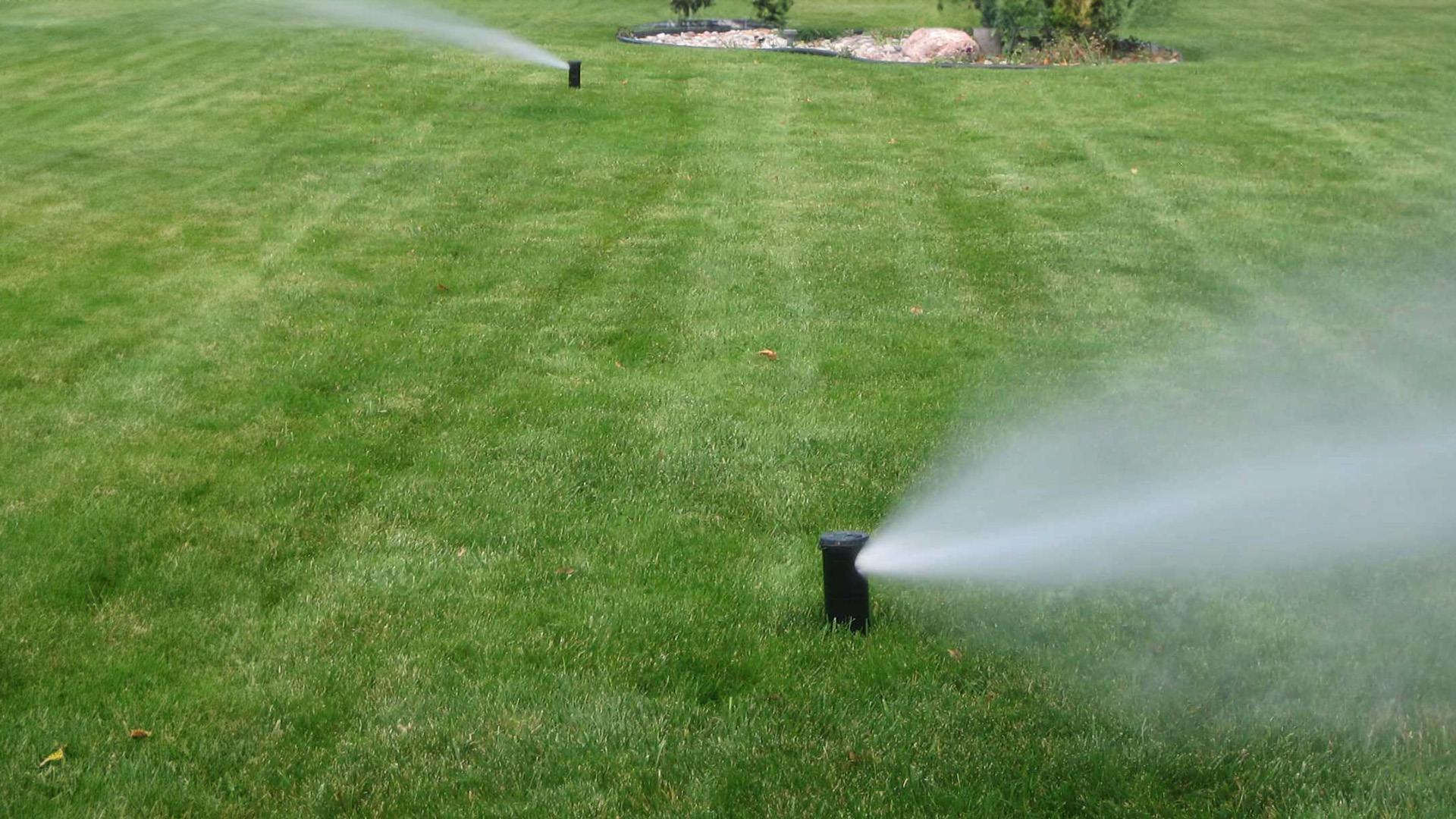
How to Winterize Sprinklers for a Safe Start in Spring
The Midwest’s warm, sunny days and cool, clear autumn nights are Mother Nature’s gift to homeowners before winter arrives. Time outdoors with family and friends on the patio is comfortable and pleasant, with green lawns and lush gardens as beautiful backdrops. But if you’ve lived through a Midwest winter, you know cold, snowy, and icy days are on the horizon. It’s time to winterize sprinklers for a safe start in spring!
Why Winterize Sprinkler Systems?
Water has unique characteristics. Did you know that water is the only familiar substance available in liquid, gas, and solid forms? As a liquid, water flows quickly through sprinkler systems. But water, also known as H2O, has a chemical composition that prevents it from becoming denser as it freezes. Instead, water expands when temperatures drop below 32° F. If you neglect to winterize sprinklers before a hard freeze, water left in the irrigation system will push against the pipes, often cracking or breaking them.
When to Winterize Sprinkler Systems
Winterizing your irrigation system can happen as early as October 1, but given historical winter patterns, it should be by Thanksgiving in mid-to-late November. Can you postpone closing until Halloween or early November? The timing for closing your sprinkler system is weather-dependent, so watch the forecasts to gauge the best close date.
If your area experiences several unexpectedly early days of freezing weather, plan to winterize your sprinklers on the next 40° F day to prevent damage to the system.
Three Steps to Winterize Sprinkler Systems
(Typical city water / well sources)
Getting your sprinkler system ready for winter involves three straightforward steps. While you can complete the process, the Sanderson & DeHaan experts can help, ensuring your system has adequate protection for a successful opening in spring.
1) Turn Off the Water
Inside your home is a shut-off valve for the sprinkler system. Look for the valve on an exterior wall in your basement or house. Turning the valve to the off position is the first place to start winterizing.
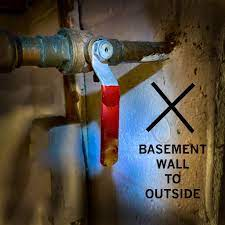
2) Evacuate Water from the Irrigation System
While step 1 will keep water from entering your sprinkler system, step 2 is essential to removing water already in the pipes. You can drain water from the sprinkler system using the following process:
- Blow-out the system: Now that the water is off, you can hook a compressor to the system and force the remaining water out through the zone valves and heads. You’ll usually find the blowout connection on the backflow preventer in the form of a boiler drain, or a fitting with a removable plug. You can also blow through the small pet-cock valves on the backflow unit itself. Most home or shop air compressors lack sufficient volume to fully clear the water from the pipes. Calling a professional irrigation contractor that has the proper equipment will help eliminate costly repairs in the spring.
- Now cycle through each zone and blow out all the water. Remember to blow out any quick couplers or spigots that may be attached to the irrigation system.
- If your sprinkler system has an automatic timer, winterizing includes shutting it off. Can you keep the timer in ‘rain mode’ to keep your programmed settings? With most Midwest winter days below freezing, you’re likely safe to switch to rain mode. But the recommended approach is to turn the time to the ‘off’ position.
- Finally, check the manual drain. Most irrigation systems have a manual drain just above the main shut-off valve that you’ll need to open and drain into a bucket. The drain is short, running the backflow preventer and the shut off, so you’ll drain only a gallon or two of water.
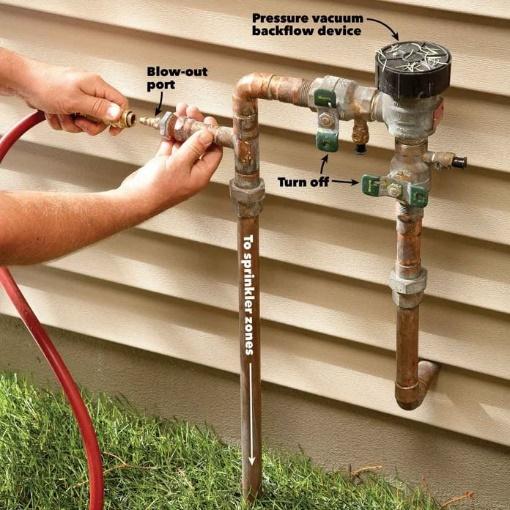
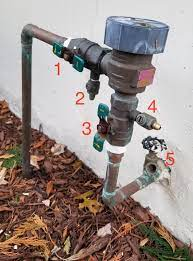
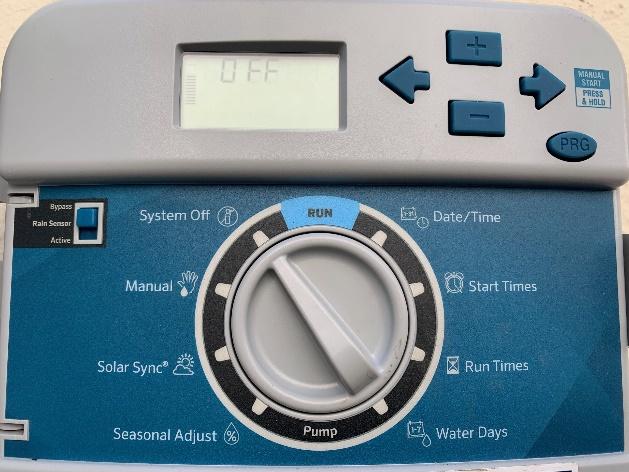
3) Shut Off and Insulate Above-Ground Sprinkler System Components
Finally, turn both main sprinkler valves on the backflow prevent and the smaller pet-cock valves on the unit to 45-degree angles, leaving them partially open. the off position. You’ll remove any water trapped between the sides of the valves and the valve housing.
Now, you can insulate above-ground parts of the sprinkler system from the weather. You can wrap the main shut-off valve, plus any exposed pipes or backflow preventers in foam covers or insulation tape. Avoid blocking any air vents or drain outlets on the backflow preventers.
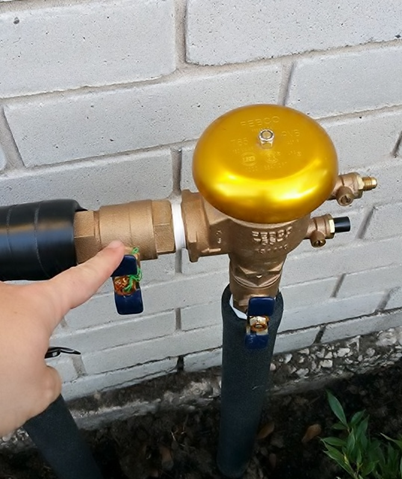
Help! It’s Going to Freeze Tonight and My Sprinkler System Isn’t Winterized!
Occasionally Michigan gets a cold snap that can damage your irrigation system unexpectedly. Or maybe you forgot about winterizing your system during the fall. No need to panic! Buried pipes are insulated even after several days of sub-freezing temperatures because the ground retains some heat. Above ground pipes including the backflow preventer, are extremely susceptible to a quick freeze. You can reduce the risk of major damage by taking the following precautions:
- Turn the main irrigation supply valve OFF and drain the backflow preventer, (steps 1 & 4 above).
- Insulate the backflow preventer. If you are not comfortable shutting off and draining the backflow preventer, use blankets or sleeping bags to wrap the backflow preventer. You’ll keep the heat in and prevent freezing. Simply covering the backflow unit in cardboard to keep the wind off makes a difference.
Talk with Sanderson & DeHaan about Winterizing Sprinklers!
Installing an effective irrigation system requires knowledge of physics, design, and water dynamics, and partnering with design experts like Sanderson & DeHaan will help you get a lawn you’ll love. Contact us and set up a time to winterize your system.

Contact
Sanderson & DeHaan Irrigation
5797 South 12th Street
Portage, MI 49024
Sanderson & DeHaan Irrigation | Website by Shamus Design


